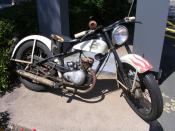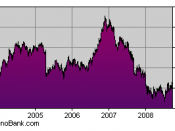Case Study: Harley-Davidson, Inc.
Introduction
History
The Harley-Davidson case presents a unique example of a unique company that, due to their remarkable customer loyalty, was able to go from nearly bankrupt to successfully gaining a substantial portion of the market in a niche product.
The company was able to gain market share and profit by substantially restructuring their business plan. Harley-Davidson changed from a traditional large batch manufacturing philosophy to just-in-time strategy. They began involving employees in problem solving and they redeveloped and focused their marketing strategy to a smaller niche market.
In 1903, William Harley-Davidson, Arthur Davidson, Williams Davidson, and Walter Davidson started Harley-Davidson in a 10x15 shed in their backyard in Milwaukee, Wisconsin. Production started with three motorcycles in 1903 and increased to 8 in 1908. In 1969, AMF Incorporated acquired Harley-Davidson Motor Company and expanded capacity from 15,000 to 40,000 motorcycles.
Harley-Davidson, Incorporated was formed in 1981, when it was purchased from AMF Incorporated in a management buyout.
In 1986, Harley-Davidson, Incorporated became a publicly held company.
The new management installed a just-in-time inventory system to reduce inventories and improve total quality. With a new quality focus Harley-Davidson began to invest heavily in research and development. In one year the new Harley-Davidson management reduced the break-even point by 18,000 motorcycles. Management's focus on efficiency in production and improvements in quality resulted in increased demand and a production capacity of 100,000 motorcycles in 1995.
Harley-Davidson operates in two segments. Motorcycles and Related Products, and transportation and vehicles segment. Total net sales for the first nine months of 95 were $1.3 billion, an increase of $174.1 million from the first nine months of 1994. Net sales increased in both the Motorcycles segment and the Transportation Vehicles segment. 1
Demand for motorcycles is continuing to increase at a rate faster...


